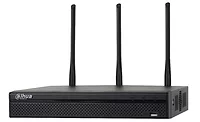Adjusting from Analog to IP Casino Surveillance
In our experience of designing and building IP systems for the gaming market, we have learned that – along with technology changes – transitioning to IP surveillance involves a multi-faceted adjustment in how surveillance departments operate. The adjustments relate to everything from how a user interfaces with the system to the needed skill-set of in-house surveillance technicians.
Monitoring Flexibility
One of the first noticeable changes is how operators monitor the large number of cameras – with fewer displays and often fewer operators. Now, multiplexers are embedded within the viewing applications, allowing more system flexibility by displaying multiple cameras on a single monitor. These multi-view displays, in conjunction with high-definition monitors, provide the needed detail for effective surveillance. Problems associated with operator viewing fatigue can be lessened with this configuration compared to analog control rooms with multiple banks of monitors.
IP systems also make it possible to view live video and play back archived video on the same monitor. This way, investigations can occur anywhere. Operators can identify a current situation and review archived video to see exactly how it came to occur. A single operator can actively monitor and review any situation.
Operational Control
Cameras and data flow of an IP system are now typically managed from a keyboard and mouse or touchscreen display instead of the traditional joystick and control panel. Procedures as simple as point-and-click allow operators to view any camera or call up specific recorded video following an incident or dispute. The immediate response can significantly reduce review time and allow the casino to take appropriate action as well as allowing the operator to more quickly resume normal procedures. An easy-to-use graphical user interface (GUI) with camera location overlays requires fewer operators to follow a person of interest throughout the casino complex.
All of these features provide the user greater control of the system, without having to memorize monitor and camera numbers. The simplified user interface creates a more effective use of monitors and monitor walls and prevents operators from missing events because they can't remember which camera is in the area.
Finally, because IP surveillance systems can be integrated with other casino business systems on the network, merging data from the various departments (i.e. retail sales, human resources, etc.) with the surveillance system means video is recorded with the corresponding data. These transactions require the surveillance department to change its operation by sharing viewing and control of video with the other departments.
Camera Control
Another area of control that has been affected by the advent of IP technology is latency in pan/tilt/zoom (PTZ) control. Latency is defined as the time lag between when a user sends a PTZ control command and when that action is displayed on the screen. Latency often leads to over-panning when a user stops at a desired position but the camera continues to pan for the latency time. Because of latency, zooming should not be used to the same extent as with analog systems. When zoomed-in on an object, it is more difficult to pan and tilt the camera. With the introduction of megapixel PTZ cameras, increased resolution is used to compensate for limited usability of zooming. To further compensate for the limitation of IP latency, manufacturers have introduced 360-degree cameras that use virtual PTZ to pan and tilt throughout the scenes.
Technical Skill-Set
Technicians tasked with system maintenance and troubleshooting must now have broader training that incorporates both camera knowledge and networking. And while new technologies are being developed primarily for IP cameras, those cameras still need to be focused, their brightness adjusted and so on while networked systems demand knowledge of network protocols, bandwidth IP addressing and sub-netting in order to configure and expand a system. Surveillance department technical personnel may have to work more closely with the IT department. Maintaining updated knowledge and credentials is more essential than ever.
Technology is changing quickly, and traditional surveillance operations are re-adjusting to leverage the capabilities offered by IP technology. The changes are also driving a better business alignment of IT and security/surveillance across all applications of video surveillance installations.
Looking for a reprint of this article?
From high-res PDFs to custom plaques, order your copy today!







